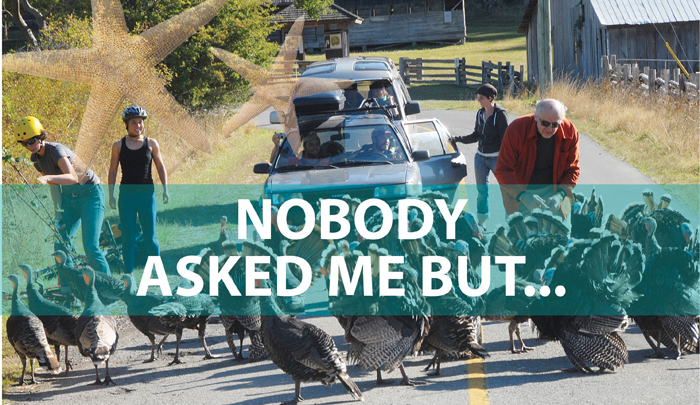If you’ve been doing some Christmas online shopping, or downloading a computer app, or even subscribing to some internet service, you’ve probably been sideswiped by the following test dialogue box: “I am not a robot.”
If you want to continue any further on your quest, not only do you have to check this box, but you usually also have to prove your “nonrobotness” by performing some task that would be impossible for some little programmable android box that makes whirring noises, emits beeps and buzzes, and displays an array of flashing lights.
The test is something called a CAPCHA or, more technically, a HIP/CAPTCHA, which is an acronym for Human Interactive Proof/Completely Automated Public Turing Test to Tell Computers and Humans Apart. The name “Turing” in this mouthful of an acronym originates from Alan Turing, a Brit who is considered the godfather of computer algorithms and artificial intelligence and the man who devised a test to determine whether the “smarts” of a machine were equivalent to those of a human.
The CAPCHA test is based on the fact that although computers are excellent at performing complex tasks, they get a failing grade when they try to accomplish simple ones. For example, your laptop may be able to figure out a 24-character password in 3.73 nanoseconds by trying 9.7-trillion possible combinations (using upper and lower case letters and numeral digits) at lightning fast speeds, but it may find it virtually impossible to tell the difference between a cat and a coffee table.
The most common type of test you are confronted with in order to prove you are not a robot is one that requires you to identify a series of letters and numbers that are written in a weird kind of stylized script and to then retype them using your keyboard. At first glance this task seems simple enough until you start to question whether that curvy character is an “S” or a “5.” And is that a lower case “L,” an upper case “I,” or the number “1”? Suddenly you begin to doubt your ability to be certain of anything, let alone whether you are indeed a robot or not.
Not that I’ve got anything against robots. Growing up in the 1950s, the silver screen was loaded with futuristic science fiction films depicting space travel made possible by rocket ships carrying both heroic humans and their robotic mechanical sidekicks. Robbie the robot from Forbidden Planet, noted for being the first science fiction movie shot in colour and CinemaScope, was one of my favourites, as was the scarier Gort the robot who, when he heard the words “Klaatu Barada Nicto,” would stop at nothing to protect Michael Rennie in the sci-fi classic The Day the Earth Stood Still.
A couple of decades later, the advent of the Star Wars saga brought us those loveable cyborgs, R2-D2 and C-3PO, who meant well enough even if they often goofed up in executing their duties. The concept of robots as friendly protectors who were willing to get down and do the menial tasks for us humans continued until RoboCop came along to warn us that cyborgville was not necessarily always in our best interests and our dependence on robots could definitely take a wrong turn.
Which brings us back to the existential question of how we really know whether or not we are robots. We can turn that question around and ask whether robots actually possess the consciousness to know that they are not humans. For example, we all know about these miniature robotic vacuum cleaners that roll along sucking up dirt until they bump into something, which then makes them ricochet off in a new direction. This is how they are programmed. Eventually they bounce off objects enough times to get the vacuuming job done.
Perhaps that’s how our lives are programmed as well. We move in our general directions until we bump our heads up against some obstacle that forces us to veer off in another direction. These obstacles can take the form of career moves, interpersonal relationships or self-acceptance. What we assume is free will or conscious decision making may be no different than the ability of a vacuum robot to determine what course it will take the next time it gets its dust bag replaced.
Do we really know what makes us human? Yes, we may be able to tell the difference between a coat rack and a hydro pole, but couldn’t that just mean that we have some sophisticated processing unit installed in our brain much like the one that allows a computer to nowadays defeat the greatest chess master? We may feel emotions and act impulsively and believe that these qualities set us apart from machines that come equipped with artificial intelligence. When push comes to shove, however, aren’t we just about as predictable as a beverage and snack vending machine?
It’s no wonder, therefore, that these HIP/CAPTCHA tests are proving so difficult for us to complete. Sure, they may be able to prevent hackers and phishing scams from taking hold of our profiles in order to empty our bank accounts or get us to agree to purchasing real estate that has been under water for 3,000 years, but they also force us to question our own identities and where we sit on the biological/mechanical spectrum.
Nobody asked me, but the next time I am confronted with the ubiquitous question about whether or not I am a robot, I’m going to answer by holding down the alt/control/delete keys simultaneously while pressing the backspace and escape keys at the same time. It may not answer the question, but it will let them know they are dealing with an entity they hadn’t reckoned with.

